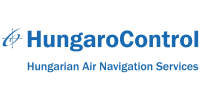Hungarian ATM system upgrade for AF3-AF4
Timeline
Description
The main objective of the Implementing Project is to further develop the Hungarian ATS system (MATIAS) in order to fulfil the requirements of the Pilot-Common-Project Regulation EU No. 716/2014, AF3 and AF4. This implementation project is a contribution to the on-going IP 2016_075_AF3_B ""FAB CE wide Study of DAM and STAM project"" (funded under Action 2016-EU-TMC-0113-M) and can be considered as a continuation of IP 2015_034_AF3 ""MATIAS ATM System upgrade for cross-border free route operation"" (Action 2015-EU-TM-0197-M).
The main objective of IP 2016_075_AF3_B – FAB CE wide Study of DAM and STAM project is to obtain a FAB CE key high-level document that contains all relevant elements required for a consequent FAB CE wide implementation of DAM and STAM processes. This IP project is a kind of technological pillar of the FAB CE initiative, to implement all the necessary function, which is connected to HungaroControls' ATM system, like the Management of Dynamic Airspace Configuration and the Interface between the NM and HungaroControl ATM system.
In order to support cross-border free route operations some upgrades of ATM systems are necessary as pre-conditions for a future FAB CE wide free-route implementation. The ultimate goal of hungaroControl is achieving the full PCP compliance of our ATM system (MATIAS).
Specific objectives:
This Implementation Project specifically aims to upgrade HungaroControl ATM system in order to ensure:
ASM Management of real time airspace data: Adapt ATM systems to exchange airspace reservation (ARES) messages containing real time (tactical) activation status of predefined airspace structures with local ASM support systems and to display airspace status data at the CWP.
Management of Dynamic Airspace Configurations: System improvements supporting the management of dynamic airspace configuration including DCTs and FRA.
Interface ATM systems to NM systems: Upgrade the ATM system with the capability to receive and process EFPL (Extended Flight Plan) information via FF(Flight & Flow)-ICE(Information for a Collaborative Environment)/1 and develop the associated procedures.
Expected Results:
All the relevant data are integrated into the ATM System. Interoperability with the Network Manager system and with other ASM systems as described in the family 3.1.2 are ensured.
ATM system is upgraded for dynamic sectorisation as required in the family 3.1.4
*ATM system is upgraded to generate messages to NM and for NM to receive and process, and distribute as required in the family 4.2.3 (including FSA (First System Activation), CPR (Correlated Position Report), AFP (ATC Flight Plan Proposal), APL (ATC Flight Plan), ACH (ATC Flight Plan Change) messages) and EFPL from Airspace Users.
Performance Benefits:
The Implementation Project will contribute positively to capacity (traffic management and congestion/reduction in delays), safety, cost efficiency, security and resilience:
Increased situational awareness of Flow Management Positions (FMPs), supervisors and ATCOs, give more options to avoid overloads which increase safety.
Better usage of available airspace volumes with reduced complexity will lead to higher capacity. Short-term opportunities are effectively and efficiently managed. Overall increase of airspace capacity through optimised utilisation of airspace configurations and scenarios.
A capacity increase combined with increased situational awareness of the ATCO is enhanced through the introduction of complexity assessments for expected scenarios. Combined this will lead to adjustements of sector monitoring values and ATCO productivity.
Increase flight efficiency in time, as trajectories are expected to be more efficient due to procedures and processes accommodating short-term changes. Larger selection of airspace configurations/scenarios will be available to allow for more robust planning.
Increase flight efficiency for AU thanks to shorter and more direct routes. In addition, increased robustness on the overall allocation of airspace will lead to a more appropriate fuel loading of airspace users.
The application of the data / information sharing concept among all involved stakeholders will lead to an increased robustness and predictability of the FAB CE managed airspace.
PREVIOUS PROJECT DESCRIPTION FOR INFORMATION PURPOSES ONLY:
General context
The main goal of the project is to further develop the Hungarian ATS system (MATIAS) in order to fulfill the requirements of the Pilot-Common-Project Regulation EU No. 716/2014, AF3 and AF4. This implementation project is a contribution to on-going #2016_075_AF3_B – FAB CE wide Study of DAM and STAM project and can be considered as a continuation of #2015_034_AF3 MATIAS ATM System upgrade
for cross-border Free Route implementation and project.
Specific objectives
This proposed Implementation Project aims to upgrade HungaroControl ATM system, to:
ASM Management of real time airspace data: Adapt ATM systems to exchange airspace reservation (ARES) messages containing real time (tactical) activation status of predefined airspace structures with local ASM support systems and to display airspace status data at the CWP.
Management of Dynamic Airspace Configurations: System improvements supporting the management of dynamic airspace configuration including DCTs and FRA Interface ATM systems to NM systems: Upgrade the ATM system with the capability to receive and process EFPL information via FF-ICE/1 and develop the associated procedures.
Expected Results:
The following results are expected:
All the relevant data integrated into ATM Systems. Interoperability with the Network Manager system and with other ASM systems as discribed in the family 3.1.2
Upgrade ATM system for dynamic sectorisation as required in the family 3.1.4
Upgrade ATM system in order to generate messages to NM and for NM to receive and process, and distribute as required in the family 4.2.3 (including FSA, CPR, AFP, APL, ACH messages) and EFPL from Airspace Users.
Performance Benefits
The positive contributions of this Implementation Project to Capacity (traffic management and congestion/reduction in delays), Safety, Cost Efficiency, Security and Resilience"
Countries involved
Additional Information
- Project Type: Air Navigation Service Provider
- CEF Call Year: 2017
- Civil/Military: Civil
- Multistakeholder: No
- Main AF: AF3 - Flexible ASM and Free Route
- Sub AF: S-AF 3.1 - Airspace Management and Advanced Flexible Use of Airspace
- Progress Percentage: 100%
